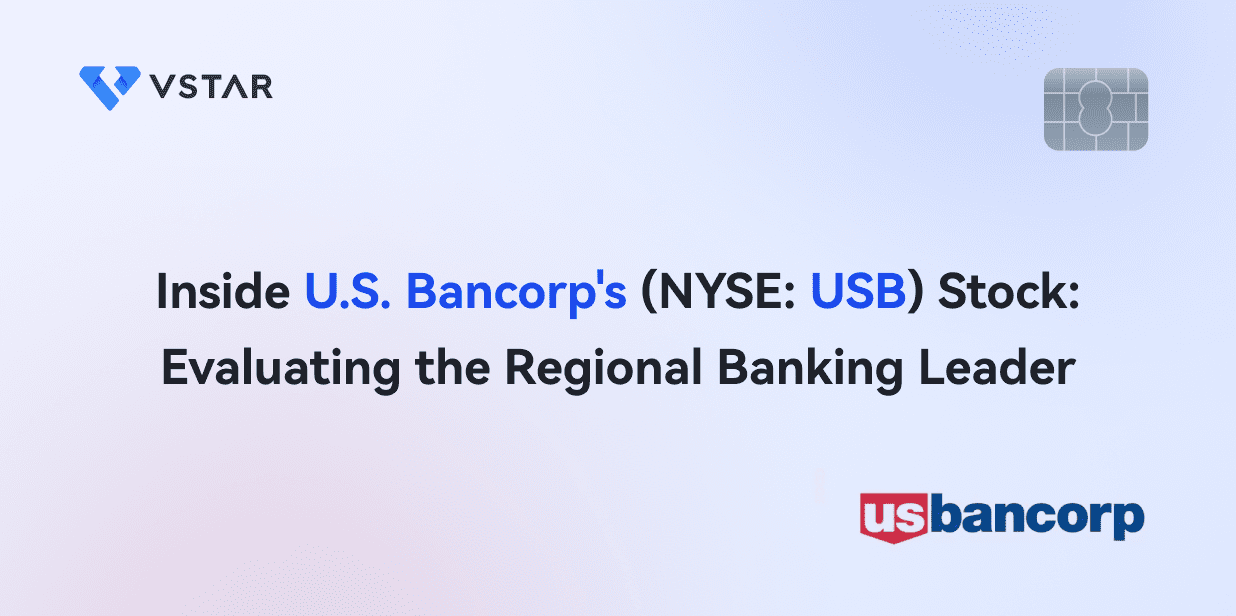The recent turmoil in the banking sector has left investors on edge as prominent financial institutions like SVB Financial's Silicon Valley Bank, Signature Bank, and First Republic Bank faced unprecedented challenges. In this climate of uncertainty, even stalwart banks like U.S. Bancorp have not been immune to the pressures of the market. Traditionally trading at a premium valuation, U.S. Bancorp has come under scrutiny, triggering concerns among investors.
Join us as we delve into the factors positively influencing U.S. Bancorp's performance, the lessons learned from recent bank failures, and the exciting opportunities that lie ahead for the bank's future prospects.
The Fabled Journey of U.S. Bancorp: From Founding Seeds to Financial Titans
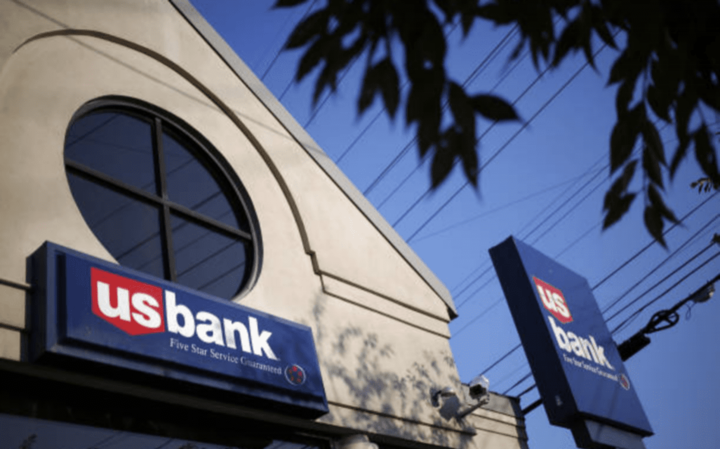
Image Source: Getty Images
In the city of Minneapolis, back in the year 1863, Jeremiah Hubbard laid the foundation for what would later become the financial titan known as U.S. Bancorp. The First National Bank of Minneapolis began its journey into the world of finance.
Over the decades, the bank grew and flourished, witnessing milestones that shaped its destiny. In 1929, it merged with the First National Bank of St. Paul, forming the formidable First National Bank of Minneapolis and St. Paul.
As time went on, U.S. Bancorp showcased its resilience and ambition. In 1968, it acquired the First National Bank of Chicago, solidifying its presence in the financial landscape.
A pivotal moment came in 1998, when U.S. Bancorp and Norwest Corporation embarked on a transformative journey. U.S. Bancorp emerged from Norwest, embracing its new identity and reaching new heights.
Under the guidance of adept leadership, this financial powerhouse continued to evolve, drawing the attention of esteemed shareholders such as The Vanguard Group, BlackRock, State Street Corporation, and T. Rowe Price.
No comprehensive tale would be complete without introducing the protagonist of this modern financial saga: Andy Cecere, the charismatic CEO who took the reins in 2017. His journey from president to chief operating officer was a testament to his abilities. Now, with unwavering determination, he navigated U.S. Bancorp into uncharted waters.
U.S. Bancorp's Business Model and Products
Image Source: Getty Images
How U.S. Bancorp makes money
Its revenue comes from a wide variety of channels, all of which are effectively leveraged to create a web of prosperity.
Net Interest Income
Like any smart business, U.S. Bancorp finds a good balance between the interest it earns on loans and the interest it has to pay on deposits. For the bank to make money, this delicate balance has to be kept.
Fee Income
With great care, U.S. Bancorp creates a range of services that attract fees. Checking accounts, credit cards, and merchant processing are just a few of the offerings that contribute to its coffers.
Investment Income
The bank's financial prowess extends beyond traditional banking, as it skillfully maneuvers its assets across various investments and securities. The bank finds more money from the earnings of these ventures.
Main Products and Services
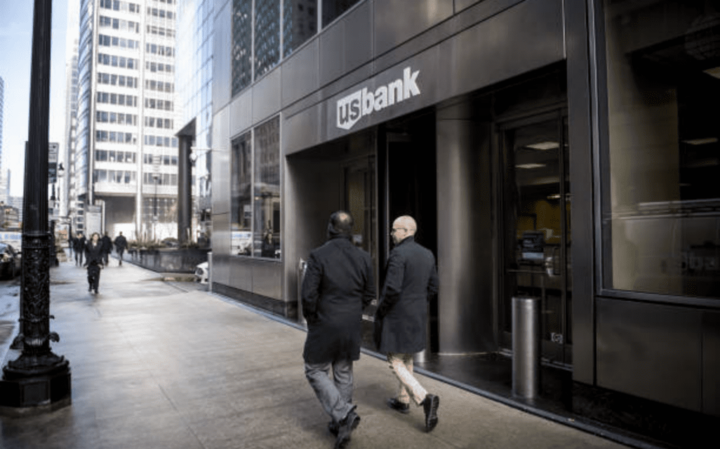
Image Source: Getty Images
U.S. Bancorp offers a range of financial services to meet the diverse needs of its customers—both individuals and businesses alike.
Consumer Banking
For the individuals who grace its halls, U.S. Bancorp presents a myriad of services, including checking accounts for daily transactions, savings accounts to nurture dreams, credit cards to empower spending, and loans and mortgages to usher in a new home or support aspirations.
Commercial Banking
For the captains of industry and enterprise, U.S. Bancorp offers a range of services. Treasury management services are in charge of cash flows, while cash management services keep business operations running smoothly. And with lending services, U.S. Bancorp plays the role of a supportive partner, providing financial wings to entrepreneurial dreams.
Payment Services
In the world of digital commerce, U.S. Bancorp stands at the vanguard, offering a variety of payment solutions. Whether it's credit card processing, merchant processing to facilitate business transactions, or embracing the tune of electronic payments, U.S. Bancorp orchestrates a seamless transaction experience.
Wealth Management
For those seeking the art of financial prosperity, U.S. Bancorp manages its wealth management expertise. Investment management services maintain a financial record, including assets for growth, while retirement planning weaves the melody of secure futures. And through brokerage services, U.S. Bancorp empowers clients to explore the myriad possibilities of the financial markets.
U.S. Bancorp: A Steadfast Financial Performer with Promise
In 2023, U.S. Bancorp's market capitalization will reach $60.18 billion, attracting investors from various corners. Looking beyond the surface, we delve into its financial statements. Notably, net income records an impressive $3.59 per share in the trailing twelve months.
The revenue growth of U.S. Bancorp is nearing its peak, with an average annual rate of 3.0% in 2023. This underscores the bank's skill in balancing expansion and stability. Further insights come from the profit margins, reflecting the bank's knack for profitability. A net interest margin of 3.1% and a radiant return on equity of 13.5% earn U.S. Bancorp a financial spotlight.
Yet, the true fascination lies in U.S. Bancorp's robust balance sheet, a steadfast defence against financial turbulence. Consistent cash flows nourish its financial foundation, ensuring resilience during uncertain times. The debt-to-equity ratio of 1.30 stands as evidence of the bank's prudent financial management and unwavering commitment to sustainability.
U.S. Bancorp (USB) Financial Ratios and Metrics
|
Metric |
U.S. |
Peer |
Industry Average |
|
P/E (Price-to-Earnings) |
8.6 |
10.7 |
12.2 |
|
P/S (Price-to-Sales) |
1.3 |
2.1 |
1.7 |
|
P/B (Price-to-Book) |
1.6 |
1.8 |
1.9 |
|
EV/EBITDA |
10.1 |
12.5 |
11.8 |
As you can see, USB's valuation multiples are all below the median of its peers and the industry. This suggests that the stock is undervalued. The lower P/E, P/S, and EV/EBITDA ratios suggest that the stock might be trading at a discount relative to its earnings and revenue potential.
Growth and Progress: U.S. Bancorp Stock
U.S. Bancorp Trading Information
IPO Time: US Bancorp went public on May 1, 1969.
Primary Exchange & Ticker: The primary exchange for US Bancorp's stock is the New York Stock Exchange (NYSE), and its ticker symbol is "USB."
Country & Currency: US Bancorp is based in the United States, and its stock is traded in US dollars (USD).
Trading Hours: The NYSE is typically open for trading Monday through Friday from 9:30 AM to 4:00 PM Eastern Time. But one can take advantage of the Pre-Market Trading Hours of 4:00 AM Eastern Time, and after-hours trading which extends until 8:00 PM Eastern Time.
USB Stock Split
US Bancorp has a history of stock splits that have played a role in shaping its stock's accessibility and value. On February 22, 1979, the company executed a 1-for-52.1 stock split, which effectively divided each share into 52.1 shares, making them more affordable for investors. This was followed by a series of subsequent splits, including a 1-for-1.1 stock split on June 25, 1984, a 1-for-2 split on April 16, 1985, and another 1-for-2 split on April 17, 1989. The trend continued with a 1-for-3 stock split on January 16, 1997, and another 1-for-3 split on April 16, 1999. These stock splits have aimed to increase the number of shares available to investors while reducing the price per share. Such actions often reflect the company's growth and its desire to accommodate a broader range of shareholders.
USB Stock Dividend
US Bancorp has paid a quarterly dividend every year since 1983, this demonstrates consistency on the part of the bank. The recent payments can be seen in the chart below.
With a dividend yield of 5.22%, US Bancorp is higher than the Financial Services sector, the industry, and its peers average. The most recent quarterly dividend of $0.48 per share was paid on June 29, 2023 (ex-date). This is an indication of USB's financial ability to fulfill shareholders' obligations while still maximizing the value of their shares.

Image Source: Tradingview
USB Stock Price Performance
USB Stock Trend Analysis
Since its initial public offering, US Bancorp's stock price has seen fluctuations that encompass both remarkable highs and lows. On January 14, 2022, the stock reached its historical peak at $59.04, illustrating the company's potential and investor confidence. However, on March 8, 2023, the stock experienced its historical low, plummeting to $27.27.
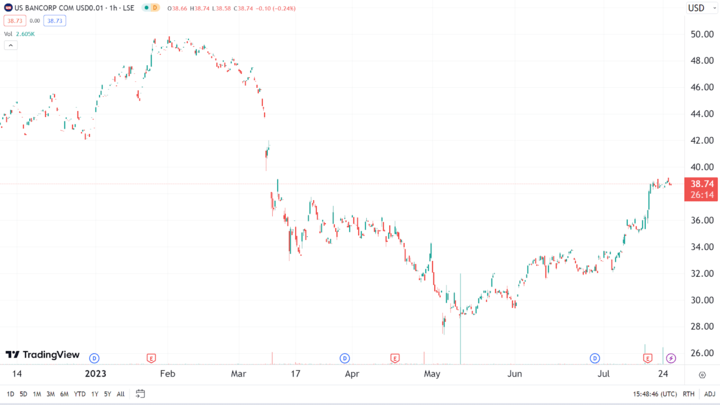
As of August 22, 2023, the stock's current price stands at $36.84. The stock's journey has been characterized by volatility, with its price exhibiting notable swings, marked by a standard deviation of 17.5%. Although the stock has trended downward over the past year, it has found a degree of stability in recent months. This fluctuating trajectory could be attributed to various market and company-specific factors that have influenced investor sentiment and confidence in US Bancorp's financial performance.
The Key drivers of USB stock price Include:
Interest rates: Interest rates are a major driver of bank stock prices. When interest rates rise, banks can charge more for loans, which leads to higher profits.
Economic growth: Economic growth is also a positive factor for bank stock prices. When the economy is growing, businesses borrow more money, which leads to higher profits for banks.
Regulatory environment: The regulatory environment can also affect bank stock prices. When regulations are relaxed, banks can make more money, which can lead to higher stock prices.
Competition: Competition from other banks can also affect USB stock price. If other banks are more efficient or offer better products and services, USB may lose customers and its stock price could decline.
US Bancorp Stock Forecast
Key Resistance and Support Levels for US Bancorp Stock Price
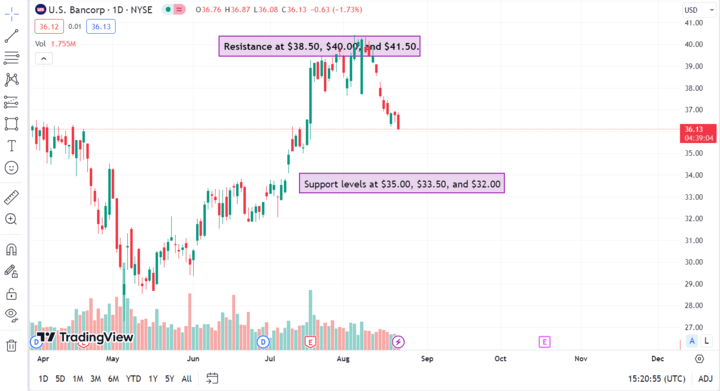
The analysis of US Bancorp stock reveals significant resistance and support levels that offer insights into potential price movements. The key resistance levels to watch include $38.50, $40.00, and $41.50. These levels represent potential points where the stock's upward momentum could encounter hurdles. Conversely, the key support levels at $35.00, $33.50, and $32.00 indicate levels at which the stock's decline might find some stabilization or buying interest. These resistance and support levels serve as important markers for traders and investors as they navigate the stock's price fluctuations, guiding their decisions on when to potentially enter or exit positions.
Analyst Recommendations and Price Targets for USB Stock
Among the analysts, 5 designated the stock as a "Strong Buy," 3 recommended a "Buy," and 5 maintained a holding stance. Collectively, this translates to a consensus leaning towards a "Moderate Buy." When considering the price targets set by these analysts, a spectrum of forecasts emerges. From ambitious target of $67.00 and moderate target of $43.17 to the lowest forecast of $33.60.
Analyzing these projections, the stock's future path appears intriguing. The median price target, representing an expected upside of 17.18%, indicates a favorable perspective on its growth potential. Meanwhile, the lowest projection suggests a modest drawback. The current trading scenario ranges from $35.00 to $38.50. With a key resistance at $40.00 and a notable support at $33.50, this outlines the immediate parameters for potential price movement. While the stock currently stands below its historical highs, it maintains a position above recent lows.
Navigating the Financial Tides: U.S. Bancorp's Challenges and Opportunities
Competitive Risks
U.S. Bancorp stands tall amid a competitive landscape, facing established giants like Bank of America and Wells Fargo. Additionally, the emergence of fintech disruptors has added a new dimension to the competition. These agile newcomers are leveraging technology to offer innovative financial products and services, posing a potential threat to traditional banking norms.
Other Risks
Alongside the competitive arena, U.S. Bancorp encounters other risks. Stringent regulations within the banking industry demand constant vigilance and adaptation. Changes in regulations could impact the company's operations and profitability. Moreover, the health of the overall economy remains a concern. A downturn could lead to reduced borrowing by businesses, thereby affecting U.S. Bancorp's lending revenue. In this digital age, cybersecurity looms as a critical risk. The company must safeguard its data and systems from cyberattacks to avoid financial losses and maintain its reputation.
Growth Opportunities
U.S. Bancorp has identified several promising avenues for growth. Venturing into new markets, such as Asia and Latin America, offers exciting possibilities to expand its customer base and capitalize on emerging economies. Embracing cutting-edge technologies, including artificial intelligence and blockchain, paves the way for enhanced efficiency, innovation, and customer experience. The company is also open to strategic acquisitions, seeking opportunities to bolster its business offerings.
Future Outlook and Expansion
Image Source: Getty Images
The resilient foundation and forward-looking strategies of U.S. Bancorp support a positive outlook for the company's future. To address competitive risks, the company is investing in advanced technologies like artificial intelligence and blockchain. These initiatives position U.S. Bancorp to lead the pack in innovation and adapt to changing customer preferences. By expanding into new markets, it unlocks the potential for untapped growth and diversification.
Mitigating other risks is equally important. Staying proactive in navigating regulatory landscape ensures compliance and business continuity. Robust cybersecurity measures shield U.S. Bancorp from potential cyber threats, preserving customer trust and safeguarding sensitive information.
Ultimately, U.S. Bancorp's emphasis on innovation, market expansion, and risk mitigation affirms its commitment to sustained growth and customer-centric services.
Reasons Why Traders Should Consider USB Stock

Image Source: Istock
Resilient Performance
U.S. Bancorp's long-standing presence in the financial industry and its track record of steady growth make it an attractive option for traders seeking stability and consistency.
Dividend History: With a history of paying quarterly dividends since 1984 and a current dividend yield of 2.7%, U.S. Bancorp offers an opportunity for traders seeking income through dividends.
Diversified Business Segments
U.S. Bancorp's diversified financial services across consumer and business banking, payment services, corporate and commercial banking, and wealth management present traders with exposure to various revenue streams.
Competitive Advantages
Despite facing competition from other large banks and fintech disruptors, U.S. Bancorp's investments in emerging technologies like artificial intelligence and blockchain, along with its expansion into new markets, indicate a proactive approach to maintaining a competitive edge.
Potential Growth Opportunities
U.S. Bancorp's growth initiatives, such as expanding into emerging markets and investing in new technologies, signify potential for future growth and enhanced profitability.
Trading Strategies for USB Stock
CFD Trading
Contract for Difference (CFD) trading is a popular strategy for gaining exposure to USB stock without owning the underlying asset. Advantages of CFD trading include leverage, which allows traders to amplify their positions, and the ability to profit from both rising and falling markets.
Long-Term Investment
For traders seeking a more conservative approach, a long-term investment in US Bancorp stock can provide steady returns and potential dividend income.
Technical Analysis
Utilizing technical analysis, traders can study historical price patterns and market trends to identify potential entry and exit points for optimal timing in trading USB stock.
News Trading
Keeping an eye on relevant financial news and events can be instrumental in capitalizing on market movements triggered by significant announcements, such as earnings reports or regulatory changes.
Trade USB Stock CFDs with VSTAR
Why Choose VSTAR
Regulatory Compliance: VSTAR is a fully regulated institutional-level trading platform, providing traders with a secure and trustworthy environment to engage in CFD trading.
User-Friendly App: VSTAR's user-friendly app caters to both experienced traders and newcomers, offering a seamless trading experience for all levels of expertise.
Low Deposit Requirement: With a minimum deposit requirement of just $50, VSTAR allows traders with varying budgets to access CFD trading on USB stocks.
Real-Time Market Access: Traders at VSTAR can access high-demand markets in real-time, allowing them to take advantage of price fluctuations as they occur.
Demo Accounts: The availability of demo accounts on VSTAR enables traders to test and refine their CFD trading strategies without risking real money.
Conclusion
U.S. Bancorp stands out in the realm of financial opportunities as an intriguing option for traders. Its enduring performance, history of rewarding dividends, and diverse business portfolio make it an attractive choice for those seeking both stability and growth in the market. Although challenges and competitive risks exist, U.S. Bancorp's strategic initiatives, including investments in innovative technologies and expansion into new markets, position it well for a promising future. Traders can participate in this narrative by employing various trading strategies, like CFD trading, to potentially benefit from the fluctuations of USB stock.







